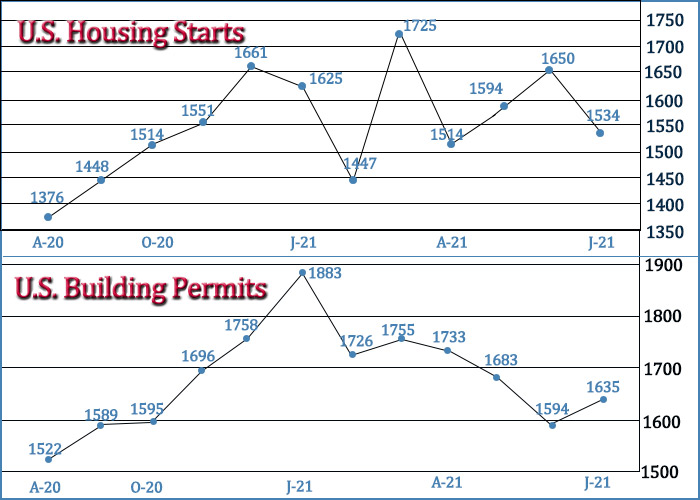A report released by the Commerce Department on Wednesday showed a sharp pullback in new residential construction in the U.S. in the month of July.
The Commerce Department said housing starts plunged by 7.0 percent to an annual rate of 1.534 million in July after jumping by 3.5 percent to a revised rate of 1.650 million in June.
Economists had expected housing starts to slump by 2.6 percent to a rate of 1.600 million from the 1.643 million originally reported for the previous month.
The bigger than expected decrease by housing starts came as multi-family starts plummeted by 13.1 percent to a rate of 423,000 and single-family starts dove by 4.5 percent to a rate of 1.111 million.
Housing starts in the Northeast showed a 49.3 percent nosedive, while starts in the West and Midwest tumbled by 11.3 percent and 6.9 percent, respectively. Housing starts in the South increased by 2.1 percent.
Meanwhile, the report said building permits shot up by 2.6 percent to an annual rate of 1.635 million in July after tumbling by 5.3 percent to a revised rate of 1.594 million in June.
Building permits, an indicator of future housing demand, had been expected to climb by 0.8 percent to a rate of 1.610 million from the 1.598 million originally reported for the previous month.
Multi-family permits spiked by 11.2 percent to a rate of 587,000, more than offsetting a 1.7 percent drop in single-family permits to a rate of 1.048 million.
The report said building permits in the West spiked by 13.3 percent, while building permits in the Midwest jumped by 4.4 percent.
On the other hand, building permits in the South slid by 1.9 percent and building permits in the Northeast fell by 0.7 percent.
“Housing starts are expected to essentially trend sideways through the rest of 2021,” said Oren Klachkin, Lead U.S. Economist at Oxford Economics. “Solid housing demand and sparse inventory will give builders strong reasons to maintain solid levels of construction.”
“Builders still have a considerable backlog of starts to work through,” he added. “However, high materials prices, a limited supply of workers and limited land availability will constrain activity.”
The National Association of Home Builders released a separate report on Tuesday showing homebuilder confidence in the U.S. unexpectedly slumped to its lowest level in a year in the month of August.
The report showed the NAHB/Wells Fargo Housing Market Index tumbled to 75 in August from 80 in July, while economists had expected the index to come in unchanged.
With the unexpected decrease, the housing market index dropped to its lowest level since hitting 72 in July of 2020.
Source: Read Full Article
